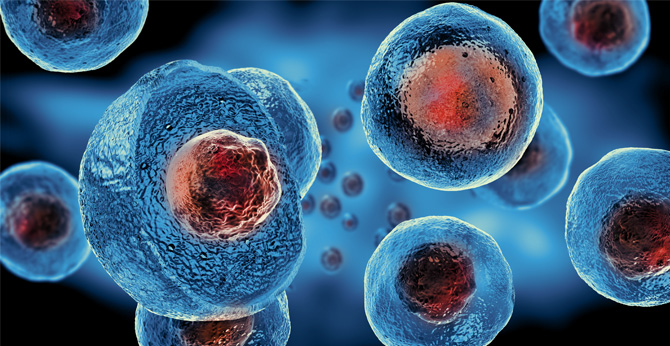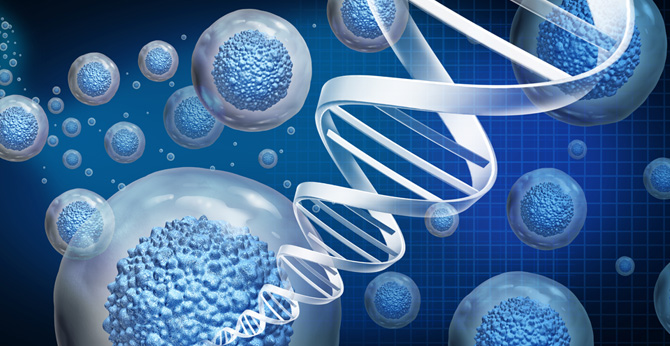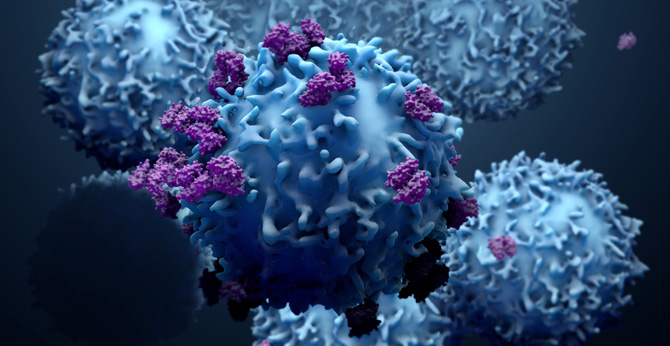All products and services are For Research Use Only and CANNOT be used in the treatment or diagnosis of disease.
The vector of anti-MUC1 chimeric antigen receptor (CAR) is constructed for the engineering of T cells to target human MUC1. The T cells are genetically modified through transduction with a lentiviral vector expressing scFv of anti-MUC1 antibody linked to CD4 transmembrane domain and FcεRIγ signaling domains. And the vector product was designed for the treatment of MUC1-expressing tumors.
|
CAR Construction : SM3/HMFG2 scfv-41BB-CD3ζ-IL22
Fig.1 In vitro antitumor efficacy of CAR-MUC1 T cells co-culture with OME for 6hrs. Flow cytometry tested the lysis of different tumor cells by CAR-MUC1 T cells and GFP+ T cells, respectively. CAR-MUC1 T and GFP+ T cells were coculture with tumors cell from OME for 6 h. Mei, Z., Zhang, K., Lam, A. K. Y., Huang, J., Qiu, F., Qiao, B., & Zhang, Y. (2020). MUC1 as a target for CAR‐T therapy in head and neck squamous cell carinoma. Cancer medicine, 9(2), 640-652. |
|
CAR Construction : SM3/HMFG2 scfv-41BB-CD3ζ-IL22
Fig.2 In vitro antitumor efficacy of CAR-MUC1 T cells co-culture with HN4 for 6hrs. Flow cytometry tested the lysis of different tumor cells by CAR-MUC1 T cells and GFP+ T cells, respectively. CAR-MUC1 T and GFP+ T cells were coculture with tumors cell from HN4 for 6 h. Mei, Z., Zhang, K., Lam, A. K. Y., Huang, J., Qiu, F., Qiao, B., & Zhang, Y. (2020). MUC1 as a target for CAR‐T therapy in head and neck squamous cell carinoma. Cancer medicine, 9(2), 640-652. |
|
CAR Construction : SM3/HMFG2 scfv-41BB-CD3ζ-IL22
Fig.3 In vitro antitumor efficacy of CAR-MUC1 T cells co-culture with CAL33 for 6hrs. Flow cytometry tested the lysis of different tumor cells by CAR-MUC1 T cells and GFP+ T cells, respectively. CAR-MUC1 T and GFP+ T cells were coculture with tumors cell from CAL33 for 6 h. Mei, Z., Zhang, K., Lam, A. K. Y., Huang, J., Qiu, F., Qiao, B., & Zhang, Y. (2020). MUC1 as a target for CAR‐T therapy in head and neck squamous cell carinoma. Cancer medicine, 9(2), 640-652. |
|
CAR Construction : SM3/HMFG2 scfv-41BB-CD3ζ-IL22
Fig.4 IL-2 secretion of CAR-MUC1 T cells and GFP+ T cells in coculture supernatants after different E/T ratio were measured by ELISA assay. Mei, Z., Zhang, K., Lam, A. K. Y., Huang, J., Qiu, F., Qiao, B., & Zhang, Y. (2020). MUC1 as a target for CAR‐T therapy in head and neck squamous cell carinoma. Cancer medicine, 9(2), 640-652. |
|
CAR Construction : SM3/HMFG2 scfv-41BB-CD3ζ-IL22
Fig.5 IFN-γ secretion of CAR-MUC1 T cells and GFP+ T cells in coculture supernatants after different E/T ratio were measured by ELISA assay. Mei, Z., Zhang, K., Lam, A. K. Y., Huang, J., Qiu, F., Qiao, B., & Zhang, Y. (2020). MUC1 as a target for CAR‐T therapy in head and neck squamous cell carinoma. Cancer medicine, 9(2), 640-652. |
|
CAR Construction : SM3/HMFG2 scfv-41BB-CD3ζ-IL22
Fig.6 TNF-α secretion of CAR-MUC1 T cells and GFP+ T cells in coculture supernatants after different E/T ratio were measured by ELISA assay. Mei, Z., Zhang, K., Lam, A. K. Y., Huang, J., Qiu, F., Qiao, B., & Zhang, Y. (2020). MUC1 as a target for CAR‐T therapy in head and neck squamous cell carinoma. Cancer medicine, 9(2), 640-652. |
|
CAR Construction : SM3/HMFG2 scfv-41BB-CD3ζ-IL22
Fig.7 In vitro antitumor efficacy of CAR-MUC1 T cells co-culture with tumor cell after exogenous addition of IL22 recombinant protein. After 72 h of exogenous addition of IL22 recombinant protein, detected the killing of CAR-MUC1 T cells against OME cell line and different HNSCC cell lines in different E/T ratios. Mei, Z., Zhang, K., Lam, A. K. Y., Huang, J., Qiu, F., Qiao, B., & Zhang, Y. (2020). MUC1 as a target for CAR‐T therapy in head and neck squamous cell carinoma. Cancer medicine, 9(2), 640-652. |
|
CAR Construction : SM3/HMFG2 scfv-41BB-CD3ζ-IL22
Fig.8 Cytokine secretion of CAR-MUC1 T cells and GFP+ T cells in coculture supernatants with different E/T ratio after exogenous addition of IL22 addition. After 72 hours of exogenous addition of IL22 recombinant protein, cytokine secretion in coculture supernatants after different E/T ratio were measured by ELISA assay. Mei, Z., Zhang, K., Lam, A. K. Y., Huang, J., Qiu, F., Qiao, B., & Zhang, Y. (2020). MUC1 as a target for CAR‐T therapy in head and neck squamous cell carinoma. Cancer medicine, 9(2), 640-652. |
|
CAR Construction : SM3/HMFG2 scfv-41BB-CD3ζ-IL22
Fig.9 Microscopic observation of the ability of two different kinds of CAR-T cells and GFP+T cells to capture cells in 1:2 E/T ratio. In CAR-MUC1 T cells group, a little number of CAR-MUC1 T cells agglomerate around tumor cells; In CAR-MUC1-IL22 T cells group, large number of CAR-MUC1-IL22 T cells agglomerate around tumor cells (Red arrow is point to the tumor cell; the blue arrow is point to the T cell or two kinds of CAR-T cells). Mei, Z., Zhang, K., Lam, A. K. Y., Huang, J., Qiu, F., Qiao, B., & Zhang, Y. (2020). MUC1 as a target for CAR‐T therapy in head and neck squamous cell carinoma. Cancer medicine, 9(2), 640-652. |
|
CAR Construction : SM3/HMFG2 scfv-41BB-CD3ζ-IL22
Fig.10 In vitro antitumor efficacy of CAR-MUC1 T cells co-culture with tumor cell after for 72 h. Three different T cells were incubated with tumor cell (Cal33) and non-neoplastic epithelial cell (OME) at a low E/T ratio (1:1; 1:2; 1:5; 1:10) for 72 h, Mei, Z., Zhang, K., Lam, A. K. Y., Huang, J., Qiu, F., Qiao, B., & Zhang, Y. (2020). MUC1 as a target for CAR‐T therapy in head and neck squamous cell carinoma. Cancer medicine, 9(2), 640-652. |
|
CAR Construction : SM3/HMFG2 scfv-41BB-CD3ζ-IL22
Fig.11 Representative T-cell expansion profile of three different T cells. Mei, Z., Zhang, K., Lam, A. K. Y., Huang, J., Qiu, F., Qiao, B., & Zhang, Y. (2020). MUC1 as a target for CAR‐T therapy in head and neck squamous cell carinoma. Cancer medicine, 9(2), 640-652. |
|
CAR Construction : SM3/HMFG2 scfv-41BB-CD3ζ-IL22
Fig.12 ELISA detected the secretion of IL22 in the culture supernatant. Mei, Z., Zhang, K., Lam, A. K. Y., Huang, J., Qiu, F., Qiao, B., & Zhang, Y. (2020). MUC1 as a target for CAR‐T therapy in head and neck squamous cell carinoma. Cancer medicine, 9(2), 640-652. |
|
CAR Construction : SM3/HMFG2 scfv-41BB-CD3ζ-IL22
Fig.13 ELISA detected the secretion of IL22 in the coculture supernatant of different E/T ratio. Mei, Z., Zhang, K., Lam, A. K. Y., Huang, J., Qiu, F., Qiao, B., & Zhang, Y. (2020). MUC1 as a target for CAR‐T therapy in head and neck squamous cell carinoma. Cancer medicine, 9(2), 640-652. |
|
CAR Construction : SM3/HMFG2 scfv-41BB-CD3ζ-IL22
Fig.14 ELISA detected the secretion of IL-2/IFN-γ/TNF-α in the coculture supernatant of low E/T ratio. Mei, Z., Zhang, K., Lam, A. K. Y., Huang, J., Qiu, F., Qiao, B., & Zhang, Y. (2020). MUC1 as a target for CAR‐T therapy in head and neck squamous cell carinoma. Cancer medicine, 9(2), 640-652. |
|
CAR Construction : SM3/HMFG2 scfv-41BB-CD3ζ-IL22
Fig.15 CAR-T cells induce tumor degradation of HNSCC in vivo. 1E6 fLuc+ HN4 tumor cells were injected into the subcutaneous tissue in NSG mouse. After 10 d, tail intravenous injection of CAR T cells (n = 5). The mice were sacrificed on day 40 for tumor analysis. B, Bioluminescence images of four treatment groups mice. Mei, Z., Zhang, K., Lam, A. K. Y., Huang, J., Qiu, F., Qiao, B., & Zhang, Y. (2020). MUC1 as a target for CAR‐T therapy in head and neck squamous cell carinoma. Cancer medicine, 9(2), 640-652. |
|
CAR Construction : SM3/HMFG2 scfv-41BB-CD3ζ-IL22
Fig.16 CAR-T cells induce tumor degradation of HNSCC in vivo. Total body bioluminescence units quantitate were measured by bioluminescence photometry and flux values (photons per second, P < .001). Mei, Z., Zhang, K., Lam, A. K. Y., Huang, J., Qiu, F., Qiao, B., & Zhang, Y. (2020). MUC1 as a target for CAR‐T therapy in head and neck squamous cell carinoma. Cancer medicine, 9(2), 640-652. |
|
CAR Construction : SM3/HMFG2 scfv-41BB-CD3ζ-IL22
Fig.17 CAR-T cells induce tumor degradation of HNSCC in vivo. Tumor volume growth curves of four treatment groups (P < .001). Mei, Z., Zhang, K., Lam, A. K. Y., Huang, J., Qiu, F., Qiao, B., & Zhang, Y. (2020). MUC1 as a target for CAR‐T therapy in head and neck squamous cell carinoma. Cancer medicine, 9(2), 640-652. |
|
CAR Construction : SM3/HMFG2 scfv-41BB-CD3ζ-IL22
Fig.18 CAR-T cells induce tumor degradation of HNSCC in vivo. T-cell infiltration statistics in four treatment groups (P < .01). Mei, Z., Zhang, K., Lam, A. K. Y., Huang, J., Qiu, F., Qiao, B., & Zhang, Y. (2020). MUC1 as a target for CAR‐T therapy in head and neck squamous cell carinoma. Cancer medicine, 9(2), 640-652. |
|
CAR Construction : SM3/HMFG2 scfv-41BB-CD3ζ-IL22
Fig.19 CAR-T cells induce tumor degradation of HNSCC in vivo. CD3 in tumor tissue was detected using the anti-CD3 antibody (Abcam 5690, dilution 1:200); cell nuclei were stained with DAPI. Mei, Z., Zhang, K., Lam, A. K. Y., Huang, J., Qiu, F., Qiao, B., & Zhang, Y. (2020). MUC1 as a target for CAR‐T therapy in head and neck squamous cell carinoma. Cancer medicine, 9(2), 640-652. |
More Published Data More Published Data
There are currently no customer reviews or questions for Anti-MUC1 scFv h(CD4-FcεRIγ) CART, pCDCAR1 (CAR-T-2-M303-4G). Click the button below to contact us or submit your feedback about this product.
For research use only. Not intended for any clinical use. No products from Creative Biolabs may be resold, modified for resale or used to manufacture commercial products without prior written approval from Creative Biolabs.
For any technical issues or product/service related questions, please leave your information below. Our team will contact you soon.
 NEWSLETTER
NEWSLETTER
The latest newsletter to introduce the latest breaking information, our site updates, field and other scientific news, important events, and insights from industry leaders
LEARN MORE NEWSLETTER NEW SOLUTION
NEW SOLUTION
CellRapeutics™ In Vivo Cell Engineering: One-stop in vivo T/B/NK cell and macrophage engineering services covering vectors construction to function verification.
LEARN MORE SOLUTION NOVEL TECHNOLOGY
NOVEL TECHNOLOGY
Silence™ CAR-T Cell: A novel platform to enhance CAR-T cell immunotherapy by combining RNAi technology to suppress genes that may impede CAR functionality.
LEARN MORE NOVEL TECHNOLOGY NEW SOLUTION
NEW SOLUTION
Canine CAR-T Therapy Development: From early target discovery, CAR design and construction, cell culture, and transfection, to in vitro and in vivo function validation.
LEARN MORE SOLUTION